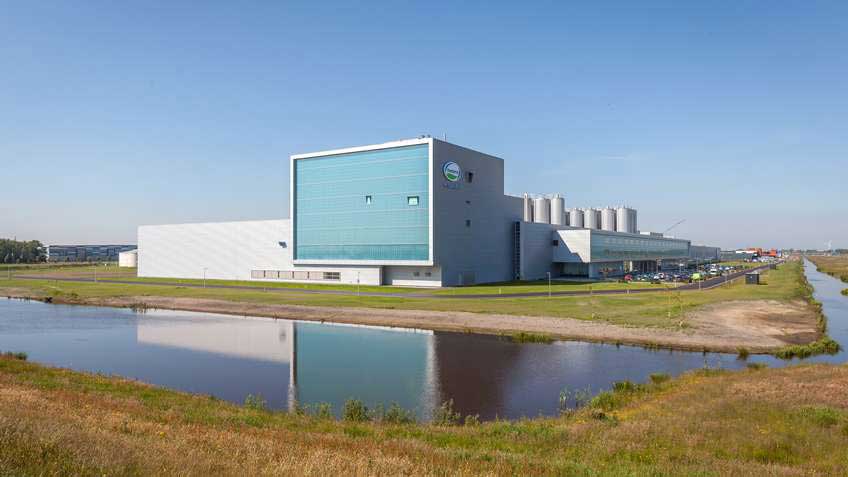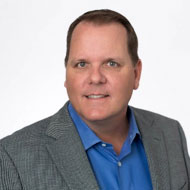The world’s largest dairy exporter, Fonterra leveraged Rockwell Automation to create a smart factory for the company’s Netherlands plant.

By Keith Higgins, VP of Digital Transformation, Rockwell Automation
Responsible for 30% of the world’s dairy exports, Fonterra is New Zealand’s largest company. Planning to expand their operations and open a new dairy plant in the Netherlands, Fonterra faced a problem. Instead of the industry average timeline of 18 to 24 months to complete construction of new diary processing plants, Fonterra had just under 12 months to construct the company’s new fully functioning plant.
Despite having less-than-half of the standard window of construction time, Fonterra was able to leverage customized connected enterprise technologies and capabilities to open a fully operational dairy plant in the same year.
Fonterra is singularly responsible for up to 25% of New Zealand’s total exports and employs about 16,000 people in New Zealand and across the globe.
Through Fonterra’s global operations, the company collects 22 billion liters (5.8 billion gallons) of milk annually to be used in the production of other dairy products, such as whey protein concentrate and isolates – common ingredients in pediatric, maternal and sports nutrition products. After Fonterra received their first orders for the Netherlands region in February, they needed to approach the construction of their newest dairy plant in an innovative way that would significantly hasten the completion of the new facility that same year.
In addition to the shortened timeframe to complete the plant’s construction, Fonterra holds itself to rigorous standards for motor control and faceplates – with interfaces to devices from other dairy providers and competing dairy processing plants. Although the new dairy plant needed to be up-and-running before the end of the year, the Fonterra team was not willing to compromise on their quality standards.
In New Zealand, Fonterra typically uses legacy equipment in dairy plant processes, which are provided by a variety of suppliers and system integrators, to enable the automation and control of the company’s dairy plants. However, after exploring the company’s automated solution provider options in the Netherlands and weighing the time constraint of the plant’s construction timeline, Fonterra instead opted for a complete wall-to-wall solution of automation, process and motor control provided by Rockwell Automation and Beenen B.V.; which would be based around its legacy equipment, which Fonterra was already knowledgeable of and was enabled by Rockwell Automation technology solutions.
In close collaboration with Fonterra, Rockwell and Beenen B.V. worked to develop a completely integrated solution that would enable Fonterra’s new dairy plant to not only be completed and fully functional on schedule, but also expand and enhance the dairy plant’s functional capabilities beyond simply enabling rapid construction . By leveraging this single-provider approach, Fonterra was able to develop and deploy a completely integrated control solution that also provided efficient communication from the shop floor to the top floor.
Fonterra recognized the potential of using connected machines, supply chains and customers to establish data-driven, secure, and agile manufacturing processes to meet shifting market demands. By deploying Rockwell Automation’s EtherNet/IP solution as the plant’s primary communication protocol, Fonterra’s Netherlands dairy plant delivers insights to improve productivity, sustainability and economic performance through faster time to market, lower total cost of ownership, improved asset utilization and enterprise risk management. Further, because EtherNet/IP is built on standard Ethernet, very little time and few resources are needed to establish the connections and means of communication between machines, supply chains and customers.
Equally as important as the systems and methods of communication between the shop floor and the top floor, is the software that enables enterprises to put that communicated data to use. By making the data insights freely available in an easy-to-read-format, operators can make data-driven decisions faster than before, and with greater positive effects on process optimization. Rockwell’s line of FactoryTalk products, including View, Historian, VantagePoint and AssetCentre, enable Fonterra with the ability to centrally secure, manage, control, track and report automation-related asset information across the company’s entire Netherlands facility.
Fonterra’s 25-hectare (62 acre) Netherlands dairy plant was successfully built between initial construction in February and the completion of the plant in December of that same year. The plant is Fonterra’s first wholly owned and operated ingredients plant in Europe, and peak production will see the facility process up to 2.7 million liters (713 thousand gallons) of whey per day, with annual production figures of around 25,000 tons of lactose and 5,000 tons of protein products.
By creating a connected enterprise in Fonterra’s Netherlands facility, the company leverages manufacturing data to address production issues in real-time while accelerating production. Thanks to cutting-edge connected enterprise capabilities provided by Rockwell Automation and Beenen B.V., Fonterra’s Netherlands dairy plant’s production data can be captured, collated and analyzed in order to improve processes; and Fonterra can share vital manufacturing information with a wide variety of disciplines both inside and outside the factory.

Keith Higgins
Keith Higgins is Vice President of Digital Transformation at Rockwell Automation. He previously served as Vice President at FogHorn and CMO at RiskVision until its acquisition in 2017. Higgins was also an executive at Symphony Teleca Corporation, an IoT and connected services company, where he played an integral role in the doubling the company’s revenue leading to a nearly $1 billion acquisition by Harman.
In this episode, I sat down with Beejan Giga, Director | Partner and Caleb Emerson, Senior Results Manager at Carpedia International. We discussed the insights behind their recent Industry Today article, “Thinking Three Moves Ahead” and together we explored how manufacturers can plan more strategically, align with their suppliers, and build the operational discipline needed to support intentional, sustainable growth. It was a conversation packed with practical perspectives on navigating a fast-changing industry landscape.